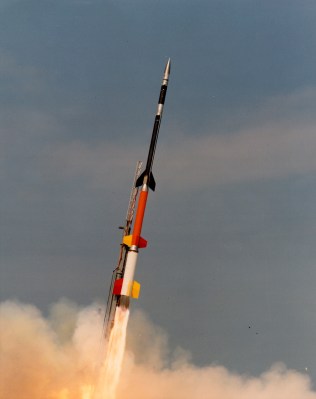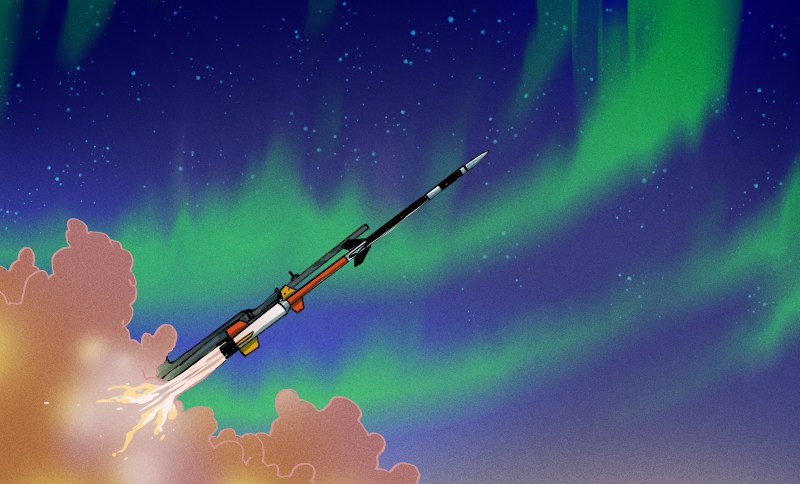Imagine what it must have been like for the first human to witness an aurora. It took a while for our species to migrate from its equatorial birthplace to latitudes where auroras are common, so it was a fairly recent event geologically speaking. Still, that first time seeing the shimmers and ribbons playing across a sky yet to be marred by light pollution must have been terrifying and thrilling, and like other displays of nature’s power, it probably fueled stories of gods and demons. The myths and legends born from ignorance of what an aurora actually represents seem quaint to most of us, but it was as good a model as our ancestors needed to explain the world around them.
Our understanding of auroras needs to be a lot deeper, though, because we now know that they are not only a beautiful atmospheric phenomenon but also a critical component in the colossal electromagnetic system formed by our planet and our star. Understanding how it works is key to everything from long-distance communication to keeping satellites in orbit to long-term weather predictions.
But how exactly does one study an aurora? Something that’s so out of reach and so evanescent seems like it would be hard to study. While it’s not exactly easy science to do, it is possible to directly study auroras, and it involves some interesting technology that actually changes them, somehow making the nocturnal light show even more beautiful.
Sounding Off

For all that we’ve advanced our knowledge of natural phenomena, auroras are still a bit of a mystery. We know the basics, of course: auroral displays occur when the pressure of the solar wind, that stream of charged particles flowing outward from the Sun, increases to the point that it can penetrate the Earth’s magnetosphere. When that happens, oxygen and nitrogen about 80 km above the surface are ionized, releasing photons of visible light in the process. The amount of light and its color are characteristic of the amount of energy streaming in from the sun.
Surprisingly, it was only relatively recently that the exact cause of auroras was determined. Prior to 1960, scientists didn’t know that the ionization was due to an influx of particles from the Sun, which was only learned once it was possible to put instruments into active auroras. The experiment was performed as part of the International Geophysical Year (IGY), a series of cooperative Earth sciences experiments conducted by 67 nations in 1957 and 1958 and highlighted by the world’s first artificial satellite, Sputnik.
The vehicle of choice for accessing the edge of space during the IGY experiments, and in fact ever since, is the sounding rocket. Sounding rockets are small rockets, at least in comparison to rockets intended to lift heavy payloads into orbit. Sounding rockets are generally solid-fueled, multistage vehicles with a limited payload capacity and usually limited to an altitude of 50 to 150 km. They’re far cheaper to launch than orbital missions, but their ballistic trajectories only give researchers a small window of time to gather data, usually while the rocket is at apogee.
Auroras on Demand
Sounding rockets have proven themselves time and again over the last 60 years for high-altitude missions, including many aimed right into active auroras. The recent AZURE mission was one that scored a spectacular bullseye on an aurora over Norway. The Auroral Zone Upwelling Rocket Experiment was designed to explore the vertical flow of particles in the ionosphere and used an interesting technique to achieve it. Launched from the Andøya Space Center on the northern coast of Norway, the Black Brant XI-A sounding rocket was equipped with a special tracer release package. At apogee, the rocket released trimethyl aluminum (TMA), an organoaluminum compound commonly used in semiconductor manufacture. The TMA reacts with oxygen and produces chemiluminescent clouds that can be observed easily from the ground. A mixture of barium and strontium was also released, which was quickly ionized and produced a similar cloud. The releases essentially created small artificial aurora for the researchers to observe as they drifted in the wind.
The two launches produced spectacular images that were captured by the researchers and nearby residents alike.
AZURE is only part of a series of experiments designed to study how auroral energy is distributed by vertical winds within the ionosphere. There are more launches planned, so the fireworks over Norway and at other sounding rocket launch facilities will continue for some time, as the beauty of natural auroras is complemented by rockets leaving behind their telltale trails.
















Don’t forget HAARP – the Highfrequency Active Auroral Research Program!
https://www.gi.alaska.edu/facilities/haarp
(Obama handed over the keys to his Weather Machine to the University of Alaska…or so it is said)
Another cool ionospheric “thing” is ionospheric sounders. I never knew these were a thing until recently. With HF radio becoming more and more of a quaint historical curiosity (at least as far as profitable communications goes), this may die out, or hams may start setting up their own networks. Eve wonder what the best frequency to use to talk to Outer Slobbovia is right now? Easy to figure out — set up automated transmitters and receivers where you are and in Outer Slobbovia, synchronize them and have them run synchronized RF sweeps through the path between them. Sort of like a giant network analyzer, to determine the path loss at each frequency.
http://www.sgo.fi/~j/gnu_chirp_sounder/
I can look out my office window in Boulder, CO and see one. Right next to a cemetery. For the longest time I thought they were trying to communicate with the dead :-) Neat large triangular antennas with something like 300 ohm power resistors at the apex. A type of antenna where you loose half your power but it transmits straight up. And there is a second, receiving antenna 90 degrees to it. I talked to the guy doing maintenance in the old shack that contains the equipment; said his dad installed it maybe in the 50s? At first they used 100′ rolls of 35mm Tri-X to record the sweeps. Shack had a dark room for developing the film. Interesting stuff….
Those are rhombic antennas, and the resistors are to prevent reflections from the end. You want the power that goes that way to radiate and not reflect at the end.
I wish people would quit harping about that!
B^)
Yay! The Black Brant!
The underdog product of an space agency crushed by the economic and political boot of its southern neighbour, it still manages to touch space routinely, more than a half century after being first flown.
Too bad it’s been more than 20 years since one was actually launched from Churchill. It’s a frickin’ designated historic site now. It’s gotten so depressing even the magnetic north pole is moving away from there.
Hey this is Canada, can’t have high tech here, just maple syrup.
Try looking towards your nearest pole at night with IR vision gear. There must be a lot more happening at IR energies than in the visible. Night vision equipment is also amazing for aurora’s.
I’ve watched plenty of evening skies with thermal cameras, never thought to look in aurora-forming conditions… hmm!
100% if I saw this in the sky I would assume it was end times, or an alien invasion, and acted accordingly.
Christchurch NZ had been the center for Ionic Research in the western world since 1970. All hushed up unless you know who to ask and what scientific papers to read.
Here are some links.
https://uncensored.co.nz/2018/02/24/study-raises-more-serious-questions-about-the-christchurch-earthquake-who-knew-it-was-coming-and-why/
https://uncensored.co.nz/2018/03/09/christchurch-earthquake-remember-september-part-two/
“In 1967, HA vonBiel of the Cornell Aeronautical Laboratory, Buffalo, New York, arrived in New Zealand to perform an experiment from which, in 1970, he would prepare a PhD thesis”
“The first point of note is that vonBiel travelled halfway around the world to find a suitable location for this experiment, which shows that even at this early stage, Christchurch NZ was a “hub” of ionospheric research.
VonBiel was interested in in the D region of the ionosphere, 70 to 90kms high, particularly with respect to radar reflection and backscatter, and dispelling assumptions made about the angular spectrum being randomly phased, and finding that the electromagnetic fields between two antenna are strongly influenced by the angular correlation with the spectrum of plane waves. This is all important stuff with regards to the pioneering field of Over The Horizon Radar.
For our purposes, things get very interesting when we understand that the experimental antennas are expected to “Illuminate the D region” and there is expected to be considerable backscatter at the reception point:”
People in Christchurch have suffered from bad headaches for decades, told it is the local wind which is ionized by natural factors, a convenient lie. NZ is so far away from the rest of the world it makes it a good place for top level research to occur, except NZ people like to be nosy and over time all secrets are uncovered in a small population of less than 5 million people. On 2 degrees of separation in NZ. Read enough and talk to enough people and you get to see and understand things most people do not, by luck more than anything.
Interesting things secrets. Always fascinated me. One of the reasons I like Hackaday. I have a lot of information about these projects in NZ I have collected over the years. Too much to tell in a comments section.
Enjoy!
The ionosphere can’t give you headaches, and HAARP is not mind control. Just because you don’t understand something doesn’t make it magic.
Proof or GTFO.
I just piled through his comment and looked at his sources, and just groaned through the whole thing ( I live in NZ) the only sort of relevance is there are theories and observations of precursors to quakes but those are pressure induced quartz triluminesance. I was going to call his BS but you beat me to it.
I can see this being used for ‘palatable’ advertising, (similar to daytime sky writers that use puffs of ‘smoke’) rather than a billboard on the moon.